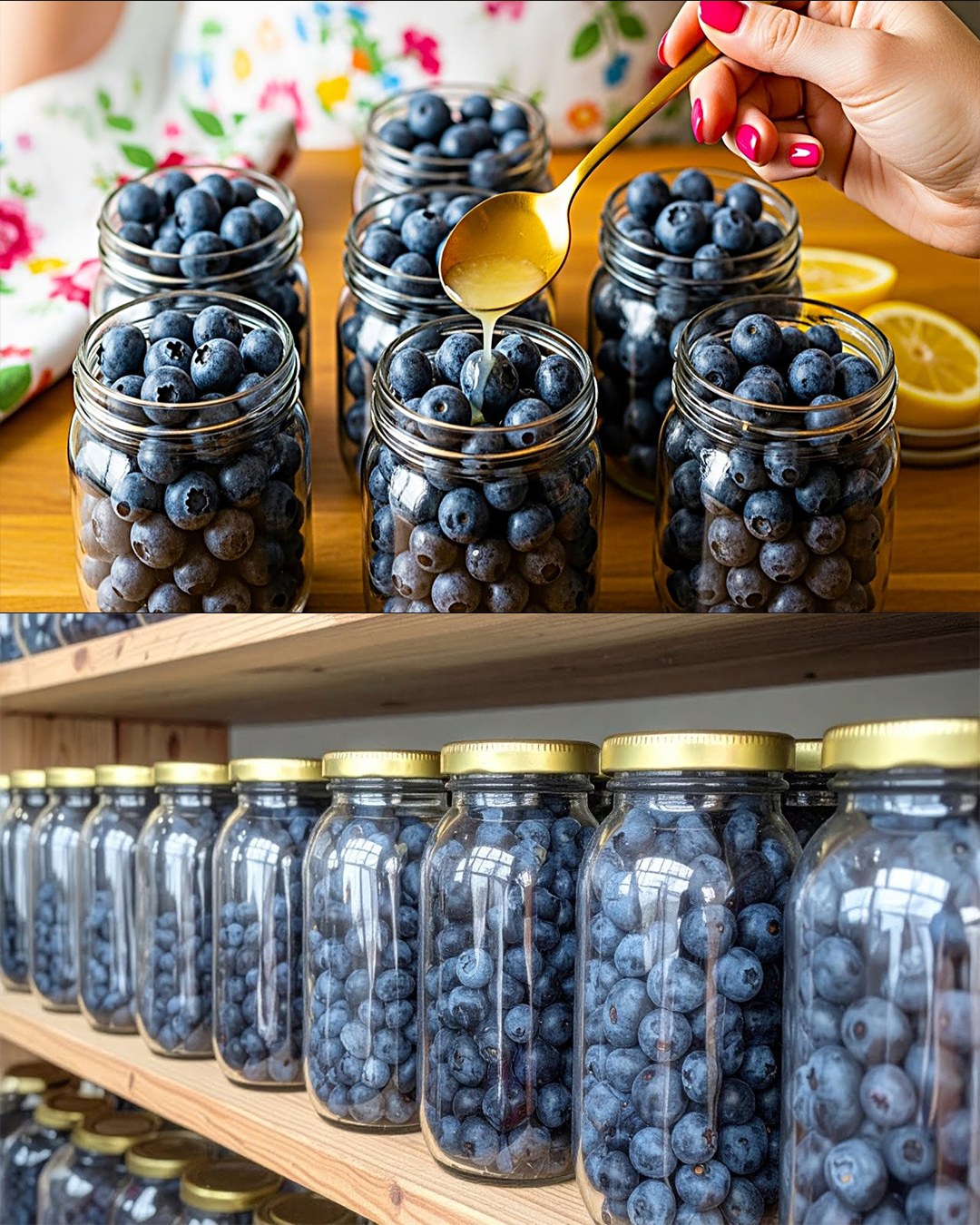5. Fill the jars with water.
Pour clean, filtered water into the jars, making sure the blueberries are completely submerged. Leave about 1 cm of space at the top so that the blueberries can expand during heating.
6. Wipe the edges of the jars and seal them.
Before sealing the jars, wipe the edges of each jar with a clean cloth to ensure that neither the fruit nor the juice interferes with the sealing process. Close the jars tightly with clean, new lids.
7. Preparing for pasteurization:
Place a clean cloth or folded kitchen towel in the bottom of a large, deep saucepan. This will prevent the jars from bumping into each other or the saucepan during heating.
Carefully place the jars upright in the saucepan. Then fill the saucepan with water until it just reaches the top of the jar lid. It is important not to cover the jars completely.
8. Pasteurizing the jars:
Bring the water to a boil. Once boiling, reduce the heat slightly and pasteurize the jars for 30 minutes. This heat will kill any bacteria and keep the fruit intact.
9. Allow the jars to cool in the water.
After 30 minutes, turn off the heat and allow the jars to cool completely in the water. This gradual cooling process will help create a strong vacuum seal and prevent the jars from cracking.
10. Store in a cool, dark place.
Once the jars have cooled completely, remove them, dry them, and store them in a dark pantry or cupboard. These jars, tightly sealed, will keep for several months, making them ideal for enjoying berries that are out of season.
Tips for Best Results
the recipe on the next page
